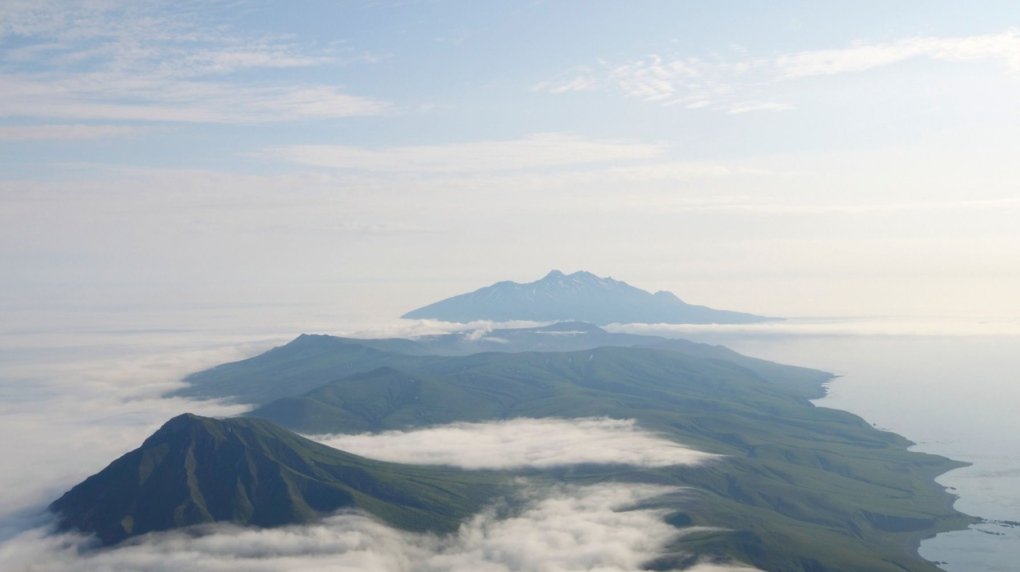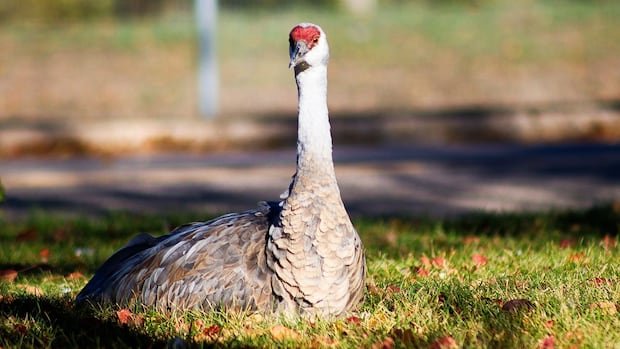An unknown volcano erupted so explosively in 1831 that it cooled the Earth’s climate. Now, almost 200 years later, scientists have identified the “mystery volcano.”
The eruption was one of the most powerful of the 19th century and spewed so much sulfur dioxide into the stratosphere that average annual temperatures in the Northern Hemisphere fell by about 1 degree Celsius (1.8 degrees Fahrenheit). The event took place during the last period of the Little Ice Age, one of the coldest periods on Earth in the last 10,000 years.
Although the year of this historic eruption was known, the location of the volcano was not known. Researchers recently solved that puzzle by sampling ice cores in Greenland, looking back in time through the layers of the cores to examine sulfur isotopes, ash grains and small fragments of volcanic glass deposited between 1831 and 1834.
Using geochemistry, radioactive dating and computer models to map the particle trajectories, scientists linked the 1831 eruption to an island volcano in the northwest Pacific Ocean, they reported Monday in the journal Proceedings of the National Academy of Sciences.
According to the analysis, the mysterious volcano was Zavaritskii (also spelled Zavaritsky) on Simushir Island, part of the Kuril Islands archipelago, an area disputed by Russia and Japan. Before the scientists’ findings, the last known eruption of Zavaritskii was in 800 BC
“For many of Earth’s volcanoes, particularly those in remote areas, we have a very poor understanding of their eruptive history,” said the study’s lead author, Dr. William Hutchison, a principal investigator in the School of Earth Sciences. and Environment from the University of St. Andrews in the United Kingdom.
“Zavaritskii is located on an extremely remote island between Japan and Russia. “No one lives there and historical records are limited to a handful of journals from ships that passed through these islands every few years,” Hutchison told CNN in an email.
With little information available about Zavaritskii’s activity during the 19th century, no one previously suspected it could be a candidate for the 1831 eruption. Instead, researchers considered volcanoes that were closer to the equator, such as the Babuyan Claro volcano in the Philippines, according to the study.
“This eruption had global climate impacts, but for a long time it was wrongly attributed to a tropical volcano,” said Dr. Stefan Brönnimann, leader of the climatology unit at the University of Bern in Switzerland. “Research now shows that the eruption took place in the Kuril Islands, not in the tropics,” said Brönnimann, who was not involved in the study.
‘A real eureka moment’
Examination of Greenland ice cores revealed that in 1831, sulfur precipitation (a sign of volcanic activity) was about 6.5 times greater in Greenland than in Antarctica. This finding suggested that the source was a large eruption from a mid-latitude volcano in the Northern Hemisphere, the researchers reported.
The study team also chemically analyzed ash and fragments of volcanic glass that measure no more than 0.0008 inches (0.02 millimeters) long. When the scientists compared their results with geochemical data sets from volcanic regions, the closest matches were found in Japan and the Kuril Islands. Volcanic eruptions in 19th-century Japan were well documented, and there were no records of a major eruption in 1831. But colleagues who had previously visited volcanoes in the Kuril Islands provided samples that led researchers to a geochemical match with the Zavaritskii caldera.
“The moment in the lab analyzing the two ashes together, one from the volcano and one from the ice core, was a true eureka moment,” Hutchison said in his email. Radiocarbon dating of the tephra, or volcanic ash, deposits on Simushir Island places them within the last 300 years. What’s more, analysis of the caldera volume and sulfur isotopes suggested that the crater formed after a massive eruption between 1700 and 1900, making Zavaritskii “the leading candidate” for the mysterious 1831 eruption, they wrote. the authors.
“I’m still surprised that an eruption of this size hasn’t been reported,” Hutchison added. “Perhaps there are reports of ashfall or atmospheric phenomena that occurred in 1831 that reside in a dusty corner of a library in Russia or Japan. The follow-up work to dig deeper into these records really excites me.”
The end of the Little Ice Age
Along with Zavaritskii, three other volcanoes erupted between 1808 and 1835. They marked the decline of the Little Ice Age, a climatic anomaly that lasted from the early 15th century until around 1850. During this time, annual temperatures in The northern hemisphere fell by 1.1 degrees Fahrenheit (0.6 degrees Celsius) on average. In some places, temperatures were 3.6 degrees Fahrenheit (2 degrees Celsius) colder than normal, and the cooling persisted for decades.
Two of the four eruptions were previously identified: Mount Tambora in Indonesia exploded in 1815 and Cosegüina in Nicaragua in 1835. The volcano that produced the 1808/1809 eruption is unknown. The addition of Zavaritskii highlights the potential of volcanoes in the Kuril Islands to alter Earth’s climate, the study authors reported.
Examination of ice cores in Greenland provided clues to the “mystery volcano” that erupted in 1831. (Michael Sigl via CNN Newsource)
After the 1831 eruption, colder, drier conditions emerged in the northern hemisphere. Reports of widespread hunger and hardship quickly followed, with famines spreading across India, Japan and Europe affecting millions of people.
“It seems plausible that volcanic cooling of the climate caused crop failure and famine,” Hutchison said. “One of the goals of ongoing research is to understand to what extent these famines were caused by the cooling of the volcanic climate or by other sociopolitical factors.”
By providing long-lost information about 19th-century volcanoes that cooled Earth’s climate, “the study perhaps strengthens our confidence in the role of volcanic eruptions in the last phase of the Little Ice Age,” Brönnimann said. .
Like Zavaritskii, many volcanoes around the world are in isolated locations and poorly monitored, making it difficult to predict when and where the next large eruption might occur, Hutchison added.
If there is a lesson to be learned from the 1831 eruption, it is that volcanic activity in remote places can have devastating global consequences, which people may not be prepared to deal with.
“We don’t really have a coordinated international community to get going when the next big disaster hits,” Hutchison said. “That’s something we need to think about as scientists and as a society.”
Mindy Weisberger is a science writer and media producer whose work has appeared in Live Science, Scientific American, and How It Works magazines.









